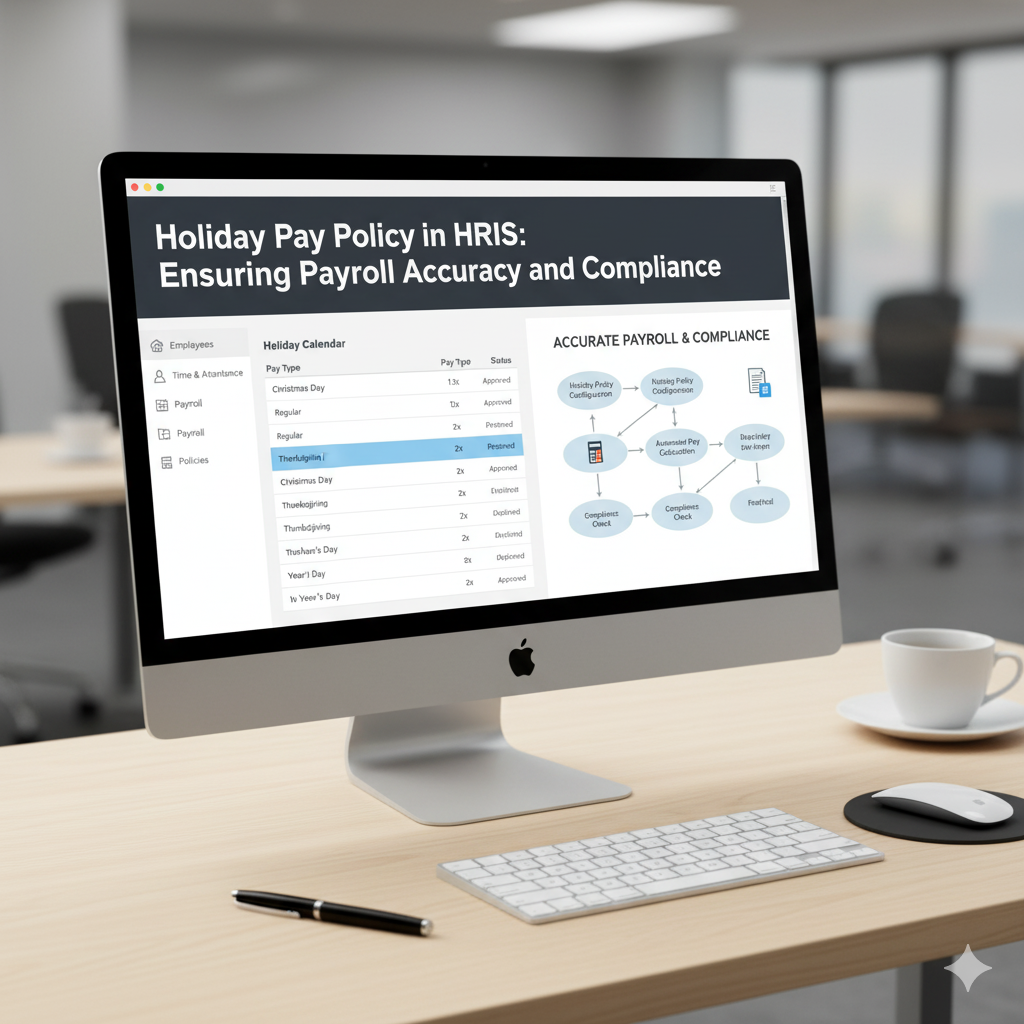Address
Kaypian, San Jose Del Monte City, Bulacan Philippines
Work Hours
Monday to Friday: 8AM - 6PM
Weekend: 10AM - 5PM
Address
Kaypian, San Jose Del Monte City, Bulacan Philippines
Work Hours
Monday to Friday: 8AM - 6PM
Weekend: 10AM - 5PM


Integrated HR. Accurate Payroll.


Integrated HR. Accurate Payroll.

Managing holiday pay is one of the most important and sensitive functions within HR and payroll operations. Even a small configuration error can lead to payroll discrepancies, compliance issues, and unhappy employees. That’s where a well-structured holiday pay policy integrated into your HRIS (Human Resource Information System) comes in.
In this article, we’ll explore how to manage and automate your holiday pay policy through HRIS tools to improve accuracy, transparency, and compliance across your organization.
A holiday pay policy defines how employees are compensated for public holidays, company-declared holidays, or days worked during holidays.
Common policy elements include:
These rules ensure that payroll systems calculate compensation correctly according to labor laws, union agreements, and internal HR guidelines.
Integrating your holiday pay policy directly into your HRIS system brings measurable benefits:
✅ 1. Payroll Accuracy
Your HRIS automatically calculates holiday pay according to pre-set rules — reducing manual input errors, duplication, or missed entries.
For example, if a holiday overlaps with a weekend, the system can auto-adjust pay rules.
⚖️ 2. Legal and Labor Law Compliance
Every region has its own holiday pay regulations. An HRIS helps maintain compliance by applying the right pay rules based on employee location, contract type, and labor code.
💬 3. Transparency for Employees
When policies are reflected in the self-service portal, employees can clearly view how their holiday pay is calculated — building trust and reducing payroll disputes.
🔄 4. Efficiency and Automation
Automation within HRIS systems like SAP SuccessFactors, Workday, or BambooHR allows HR teams to update holiday rules once and apply them globally — saving hours of manual payroll adjustment.
Step 1: Define Company and Legal Holiday Pay Rules
Work with HR and finance teams to outline:
Document these rules clearly before configuration.
Step 2: Configure the Policy in Your HRIS
Most HRIS platforms allow you to create pay codes or compensation rules linked to holiday calendars.
Examples:
Be sure to test each rule before going live.
Step 3: Integrate with Payroll and Attendance Modules
Your HRIS should connect holiday pay data with:
Integration ensures that payroll runs reflect accurate, real-time data.
Step 4: Validate and Test the Setup
Always conduct test payroll runs for:
Testing helps identify inconsistencies before actual payroll disbursement.
Step 5: Communicate with Employees
Once the policy is configured, announce and document it:
Transparency ensures everyone understands how holiday pay is calculated and prevents misunderstandings.
❌ Failing to update holiday pay rules annually.
❌ Applying one policy across multiple countries with differing regulations.
❌ Overlooking integration between HRIS and payroll systems.
❌ Skipping validation before payroll runs.
A proactive approach ensures you stay compliant and prevent payroll rework.
🕒 Review annually: Update your HRIS holiday tables before the fiscal year starts.
🧾 Maintain documentation: Keep an audit trail of rule changes for compliance checks.
🔒 Limit access: Only authorized HRIS administrators should modify pay rules.
🤝 Collaborate across departments: Involve payroll, HR, and legal teams in every update.
⚙️ Leverage automation: Use built-in scheduling or workflow features to update policies automatically.
When done right, automation delivers:
An effective holiday pay policy in HRIS bridges the gap between HR policy and payroll execution.
By defining clear pay rules, integrating them into your HRIS, and automating updates, your organization can ensure payroll accuracy, compliance, and fairness across all levels.
Holiday pay may happen only a few times a year — but getting it wrong can create headaches that last for months. The key is to set it up right once and let your HRIS handle the rest.